G6PD Medication Safety Checker
Check if common medications are safe for people with G6PD deficiency. Based on WHO Essential Medicines List and CDC guidelines.
Imagine taking a common medication for an infection, only to have your red blood cells start breaking down within hours. For someone with G6PD deficiency, this isn’t hypothetical-it’s a real and dangerous risk. Glucose-6-phosphate dehydrogenase (G6PD) deficiency affects around 400 million people worldwide, making it the most common human enzyme defect. Yet, many people-patients and doctors alike-don’t know it exists until it’s too late. The good news? Hemolysis from G6PD deficiency is almost always preventable. It doesn’t require complex treatments or lifelong drugs. It just requires knowing what to avoid.
What Is G6PD Deficiency, Really?
G6PD deficiency is a genetic condition where your red blood cells can’t handle oxidative stress. Normally, your body uses G6PD to make NADPH, which keeps glutathione active. Glutathione is like a shield for your red blood cells, protecting them from damage caused by certain chemicals, infections, or foods. Without enough G6PD, that shield breaks down. When exposed to triggers, red blood cells rupture, leading to hemolytic anemia.
This isn’t just a rare disorder. It’s common in regions where malaria was once widespread-Africa, the Mediterranean, and Southeast Asia. That’s because the mutation offers some protection against malaria. But in today’s world, the biggest threat isn’t malaria-it’s medication.
There are over 200 variants of G6PD deficiency, grouped into five classes. Most people fall into Class III-moderate deficiency. They might never know they have it unless they take a risky drug. A smaller group, Class I or II, has severe deficiency and can have life-threatening reactions even to minor triggers. The problem? Many people never get tested. In the U.S., only 12 states require newborn screening. In many countries, it’s not done at all.
The Medications That Can Trigger Hemolysis
Not all drugs are dangerous. But 87 medications on the WHO’s Essential Medicines List are known to cause hemolysis in G6PD-deficient people. These aren’t obscure drugs-they’re commonly prescribed.
- Rasburicase: Used to treat tumor lysis syndrome. The FDA has a black box warning: do not use in G6PD-deficient patients. A single dose can drop hemoglobin to 3 g/dL. One case in the American Journal of Emergency Medicine required 10 units of blood.
- Methylene blue: Given for methemoglobinemia. In G6PD-deficient patients, it causes severe hemolysis in 95% of cases. A nurse on Reddit reported a patient’s hemoglobin crashing from 14.2 to 5.8 g/dL after a single dose-because no one checked G6PD status.
- Primaquine: Used to cure malaria caused by Plasmodium vivax. It’s one of the most common triggers. In areas without testing, up to 15% of patients on primaquine develop acute hemolysis. Thailand cut that to 0.3% after making G6PD testing mandatory.
- Dapsone: Used for leprosy and some skin conditions. At doses above 50 mg daily, it causes hemolysis in 80% of deficient patients.
- Sulfonamides: Antibiotics like sulfamethoxazole (Bactrim). Even though the evidence is weak, 92% of package inserts still warn against them. That’s based on just 17 documented cases since 1965.
These aren’t rare side effects. They’re predictable, preventable disasters. And they happen because doctors assume the patient is fine-or don’t think to ask.
Safe Alternatives for Common Conditions
You don’t have to go without treatment. For almost every risky drug, there’s a safe alternative.
- Malaria prevention: Instead of primaquine or chloroquine, use atovaquone-proguanil (Malarone). It’s safe for all G6PD variants. The CDC recommends it for travelers. In a 2021 study of 1,245 G6PD-deficient travelers, 95% had no hemolysis.
- Malaria cure: For P. vivax, tafenoquine is now approved-but only if you’ve been tested. The FDA requires proof of normal G6PD levels before prescribing it.
- Antibiotics: For infections, use penicillin, cephalosporins, or macrolides. Avoid sulfa drugs unless absolutely necessary.
- Methemoglobinemia: Instead of methylene blue, use ascorbic acid (vitamin C) or exchange transfusion. Both are effective and safe.
- Diabetes: Sulfonylureas like glyburide are often flagged, but the risk is minimal. Only 17 cases exist in 60 years. Still, metformin or insulin are safer choices.
There’s a pattern here: safe drugs don’t produce oxidative stress. They don’t create free radicals that overwhelm your red blood cells. Stick to those.
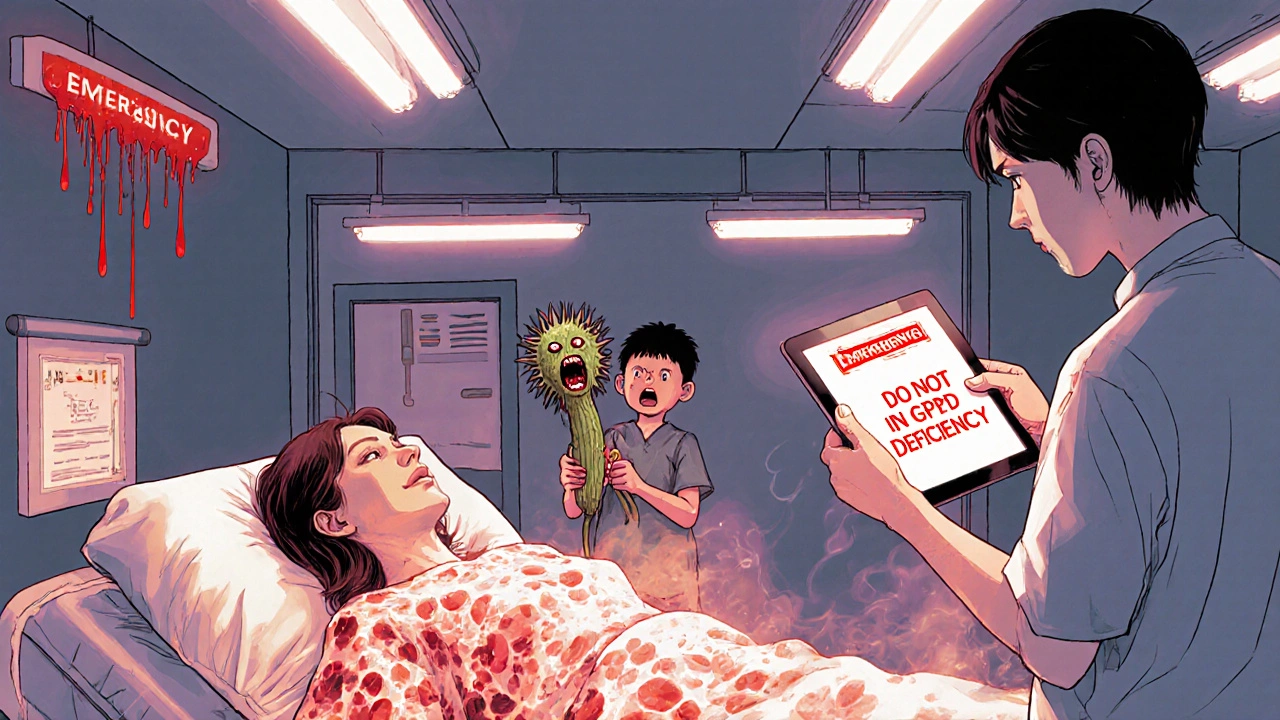
Testing: The Only Reliable Prevention
There’s no way to know if you’re at risk without testing. And timing matters.
After a hemolytic episode, your body makes new red blood cells with normal G6PD levels. If you test too soon-within 3 months-you’ll get a false negative. The test will say you’re fine, when you’re not. Always wait at least 90 days after a crisis.
The best test is a quantitative spectrophotometric assay. It measures enzyme activity in units per gram of hemoglobin. Results are clear:
- Below 1.7 U/g Hb = Class I or II (high risk)
- 1.7-12.0 U/g Hb = Class III (moderate risk)
- Above 12.0 U/g Hb = Normal
Point-of-care tests now exist. The STANDARD G6PD Test System, approved by the FDA in January 2024, gives results in 8 minutes with 99.1% accuracy. Hospitals in the U.S. and Thailand are using them in emergency rooms and clinics. No more waiting days for lab results.
And yes-women can be affected too. Because of X-chromosome inactivation, about 15% of female carriers have low enough enzyme levels to be at risk. The old idea that only men get sick is outdated and dangerous.
What About Foods and Supplements?
Fava beans are the most well-known trigger. Eating them can cause acute hemolysis, especially in children. This is called favism. But it’s rare outside Mediterranean and Middle Eastern populations.
Other possible triggers include:
- Naphthalene (mothballs)
- Some herbal supplements like tea tree oil, henna, and high-dose vitamin C
- Severe infections like pneumonia or hepatitis
There’s no need to avoid all antioxidants. Vitamin C in normal doses (under 500 mg/day) is safe. The danger comes from high doses or synthetic forms used in some supplements.
The best advice? Stick to whole foods. Avoid mothballs. Treat infections quickly. And if you’re unsure, ask your doctor to check your G6PD status before starting any new supplement.

Why This Matters More Than You Think
G6PD deficiency isn’t a death sentence. It’s a manageable condition-if you know how.
In Saudi Arabia, universal newborn screening reduced hospital admissions for hemolytic crises by 78% between 2010 and 2020. In Thailand, mandatory testing before primaquine use cut hemolysis from 15% to 0.3%. In the U.S., a pilot program at UCSF that flagged risky drugs in electronic health records reduced inappropriate prescriptions by 89%.
But globally, only 18 of 47 African countries have national screening programs. In the U.S., most doctors still don’t ask about G6PD before prescribing. A 2022 survey of 1,247 G6PD-deficient patients found that 68% had experienced hemolysis-and 42% said their doctors didn’t know the risks.
Here’s the truth: if you’re of African, Mediterranean, or Southeast Asian descent, you’re at higher risk. If you’ve ever had unexplained jaundice, dark urine, or fatigue after an infection or new medication, you might have it. Get tested.
And if you’re a parent, ask for your newborn’s G6PD status before leaving the hospital. It takes 15 minutes. It could save their life.
What You Can Do Right Now
You don’t need to wait for a crisis. Here’s what to do:
- If you’re from a high-risk region or have family history, get tested. Use a quantitative test, not just a spot test.
- Carry a medical alert card or app listing your G6PD status and the drugs to avoid.
- Before taking any new medication-even over-the-counter-ask: “Is this safe for someone with G6PD deficiency?”
- Teach your family. Women can be carriers. Children can have favism.
- Use the WHO’s updated list of 87 medications to avoid. Keep it on your phone.
Knowledge is your shield. Testing is your safety net. And with the right precautions, you can live a full, healthy life without fear of sudden, avoidable harm.
Can G6PD deficiency be cured?
No, G6PD deficiency cannot be cured because it’s a genetic condition. But it can be managed effectively by avoiding oxidative triggers like certain medications, foods, and chemicals. Most people live normal lives with no symptoms as long as they avoid known risks.
Is G6PD deficiency only a problem for men?
No. While it’s more common in men because it’s X-linked, about 15% of women who carry the gene have low enough enzyme levels to experience hemolysis. This happens due to X-chromosome inactivation, where some of their red blood cells express the defective gene. Women should not assume they’re safe just because they’re female.
How do I know if I’ve had a hemolytic episode?
Symptoms include sudden fatigue, pale skin, dark urine (like cola), yellowing of the eyes or skin (jaundice), shortness of breath, and rapid heartbeat. These usually appear within 24-72 hours after taking a trigger drug or eating fava beans. If you experience these, seek medical help immediately.
Can I take ibuprofen or acetaminophen if I have G6PD deficiency?
Yes. Ibuprofen and acetaminophen (Tylenol) are considered safe at standard doses. They don’t cause oxidative stress on red blood cells. These are the preferred pain relievers for people with G6PD deficiency. Avoid aspirin in children due to Reye’s syndrome risk, but not because of G6PD.
What should I do if I accidentally take a risky medication?
Stop the medication immediately. Go to the emergency room. Tell them you have G6PD deficiency. Early treatment can prevent severe complications. You may need fluids, oxygen, and possibly a blood transfusion. The sooner you act, the better your outcome.
Are there any new treatments being developed?
Yes. Researchers are testing N-acetylcysteine (NAC), which may protect red blood cells from oxidative damage when taken with risky drugs. Phase I trials for recombinant human G6PD enzyme replacement therapy are set to begin in late 2024. These aren’t available yet, but they show promise for future prevention.
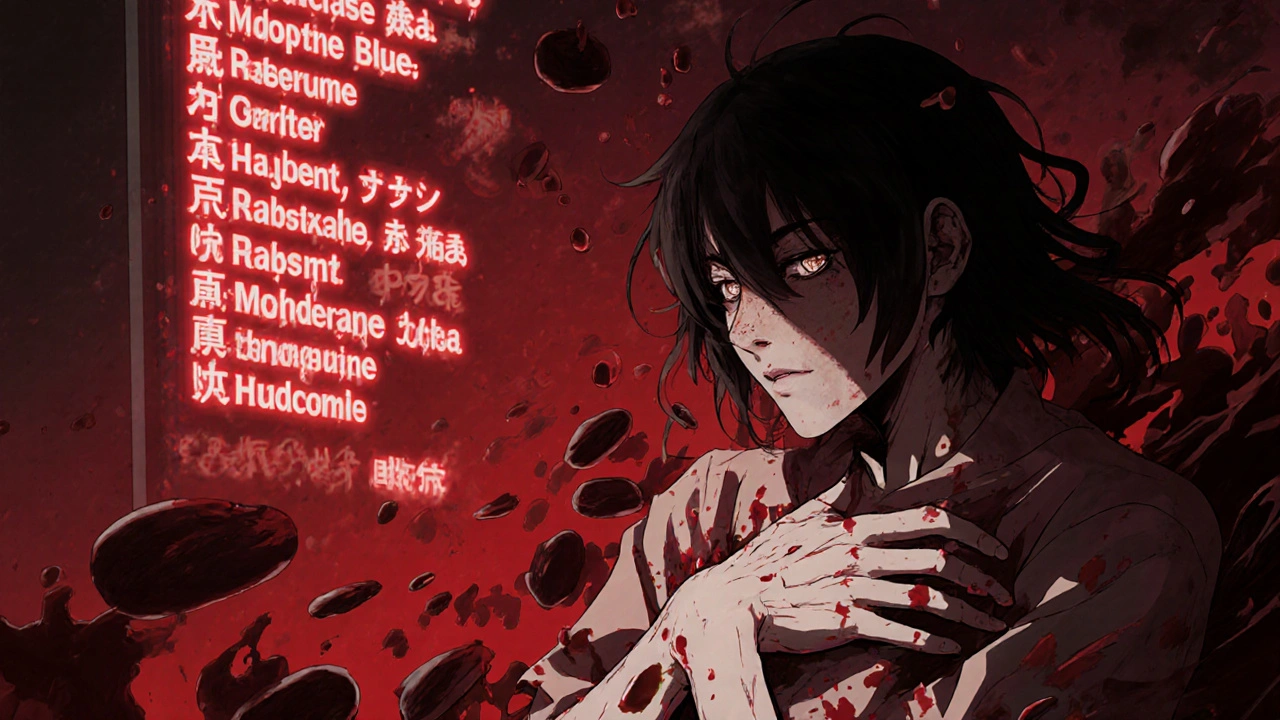
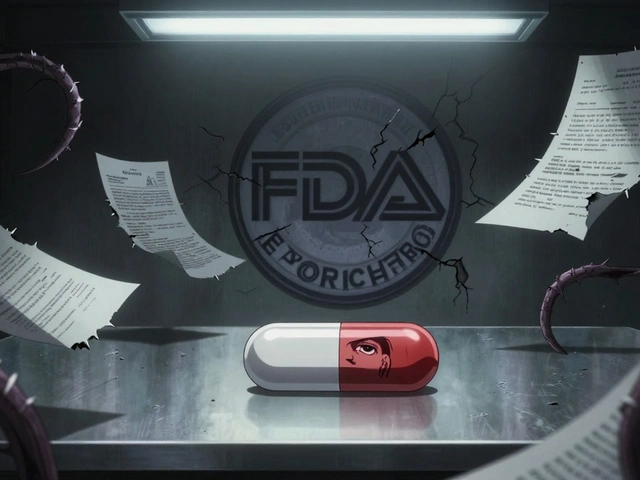
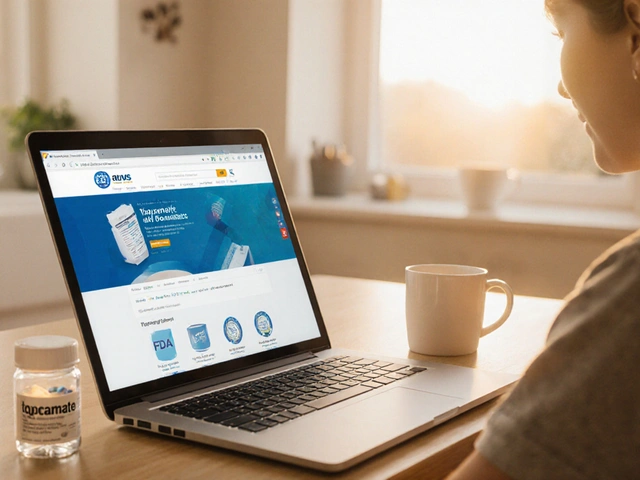

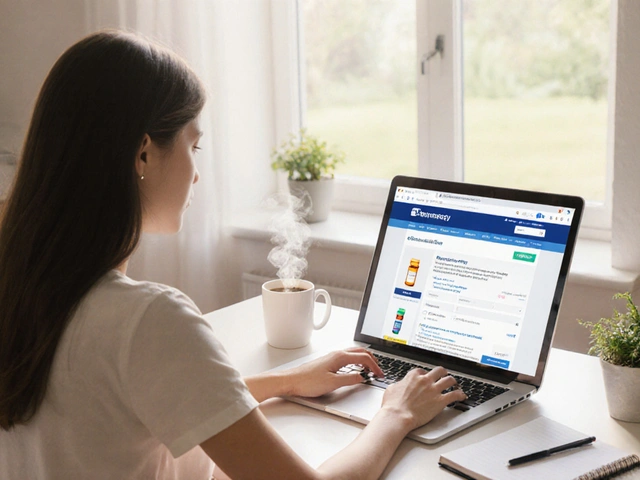

9 Comments
Nawal Albakri
November 1, 2025 AT 19:44 PMtheyre hiding the truth again. G6PD is just the tip of the iceberg. Big Pharma knows which drugs kill us and still pushes them because they make more money. I saw a doc in Nigeria get fired for warning people about primaquine. Now my cousin is dead. They dont want you to know. They want you dependent. And dont even get me started on how they use malaria maps to target populations. This is genocide with a stethoscope.
Megan Oftedal
November 2, 2025 AT 00:42 AMThank you for this incredibly thorough and compassionate breakdown. As a nurse in rural Ohio, I’ve seen too many patients come in with hemolytic crises because no one ever asked about ancestry or ran a simple test. It’s not just about meds-it’s about systemic neglect. I’ve started printing out the WHO list and laminating it for my high-risk patients. Small steps, but they matter.
Musa Aminu
November 2, 2025 AT 07:43 AMListen here. This whole thing is a Western scam. We in Africa have lived with this for centuries. Our grandmas knew fava beans were bad. Our healers knew when to stop the herbs. Now you come with your fancy tests and your FDA stamps like we’re stupid? We don’t need your ‘safe alternatives’-we need you to stop poisoning us with your drugs in the first place. This isn’t science. This is colonialism with a prescription pad.
robert maisha
November 3, 2025 AT 04:54 AMIt is imperative to recognize that the pathophysiological mechanism underlying G6PD deficiency is not merely enzymatic insufficiency but a failure of redox homeostasis which renders erythrocytes vulnerable to oxidative insult. The clinical implications are profound and demand a paradigm shift in pharmacovigilance particularly in populations with high allelic frequency. The absence of universal screening constitutes a failure of medical ethics
Robert Andersen
November 4, 2025 AT 06:05 AMMan I never knew this was a thing until my cousin got hospitalized after taking Bactrim for a UTI. He was fine one day, next day he looked like a ghost. Turned out his grandma had it. We all got tested. My mom’s borderline but she’s fine as long as she avoids sulfa drugs. Just makes you wonder how many people are out there getting sick and no one knows why. Why isn’t this on every blood panel? Why do we wait for someone to almost die?
Eric Donald
November 5, 2025 AT 22:05 PMThank you for sharing this. I work in public health and see the gaps daily. The fact that only 12 U.S. states screen newborns is unacceptable. The STANDARD G6PD test is a game-changer-8 minutes, 99.1% accuracy. Why isn’t this standard in every ER? Why are we still relying on outdated assumptions? Knowledge isn’t just power-it’s survival. Let’s push for policy change, not just awareness.
Brenda Flores
November 7, 2025 AT 12:13 PMThis is so important. I just got tested last year after my daughter had jaundice as a newborn. Turns out I’m a carrier. I never knew. I’ve been taking ibuprofen for years thinking it was fine (it is!) but now I double-check every med. I printed the WHO list and saved it on my phone. I even showed my doctor. She didn’t know half the drugs on it. Please, if you’re from a high-risk region-get tested. It’s a 15-minute test that could save your life.
Jackie R
November 8, 2025 AT 19:06 PMStop the panic. Most people with G6PD deficiency live normal lives. You don’t need a card. You don’t need a test. Just avoid fava beans and sulfa drugs. Everything else is fearmongering. If you’re not from Africa or Asia, you’re probably fine. Stop overmedicalizing everything.
Josh Arce
November 8, 2025 AT 22:35 PMWait so you’re saying methylene blue is bad but vitamin C is fine? But vitamin C is an oxidant right? So why is it safe? This doesn’t add up. I think the whole list is arbitrary. Maybe it’s not the drugs. Maybe it’s the sugar in the pills. Or the fillers. Or the GMO corn in the capsules. They’re hiding the real cause. I’ve been taking primaquine for years. I’m fine. So are you lying or just confused?